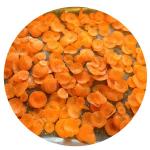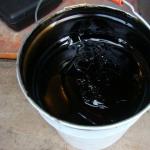Indoor Violets (Saintpaulias) are so popular that it is difficult to find an apartment where there are not pots of these wonderful flowering plants on the windowsills. Their diversity is amazing. They vary in size, flower shape and many other characteristics. In this article we will help you understand the complexities of classifying types of violets, and also describe the most popular varieties.
For the first time, this plant, unknown to science, was discovered in 1892 in Tanzania by the commandant of the Uzambara district of German East Africa, Walter von Saint-Paul. The flower grew in a crevice in the ravine right on a mossy stone. The shape and color of the petals resembled the violet known at that time, but was much more delicate.
Walter collected the seeds of the plant and sent them to his father Ulrich von Saint-Paul in Germany, who was there the president of the German Dendrological Society. He, in turn, gave these seeds to Hermann Veldland, director of the botanical garden in Hannover. Wendland grew the flower from seeds and in 1893 described it with the name “Saintpaulia ionanta” in honor of Walter von Saint-Paul, identifying this species as a separate genus. In the same year, he wrote an article dedicated to Saintpaulia, published in the magazine “Gartenflora”.
Saintpaulia belongs to the order Lamiaceae, family Gesneriaceae, genus Saintpaulia. Due to the fact that in appearance this flower resembles a real violet (Viola), Saintpaulia is often called Uzambara or African violet - after the area where it was found. In our article we will simply call it violet.
Types of wild violets
The natural distribution area of the wild violet is limited to certain mountainous areas in Tanzania and Kenya. There it can be found along the banks of rivers flowing down steep mountain slopes, near waterfalls that irrigate the surrounding area with water dust, at the bottom of ravines in the partial shade of tall trees. In direct sunlight, this violet quickly dies. About 20 species of Saintpaulia grow under natural conditions. Let us introduce you to some of them.

Velvet
Saintpaulia Velvet (Saintpaulia velutina) has jagged, rounded dark green leaves, 4-5 cm in size. The reverse side of the leaf has a reddish tint. The lush inflorescence consists of small blue-violet flowers with a dark center.

Grote (Saintpaulia grotei) is an ampel-type plant that has rounded pubescent leaves of bright green or purple color up to 6 cm long and about 5 cm wide. Small blue-purple flowers up to 2.5 cm in diameter have a dark eye and a border.

Violet-flowered
Violet-flowered or violet-flowered (Saintpaulia ionantha). The plant has a large rosette, up to 60 cm in diameter, short succulent stems with heart-shaped, dark green leaves up to 8 cm in length. The flowers are violet-blue in color.
Classification of varieties of indoor violets
There are many varieties of violets, varying in size, flower shape, number and color of petals. Moreover, the same variety can belong to several groups. Now we will try to understand the classification of indoor violets.
According to socket size

Micromini. They have a rosette diameter of up to 8 cm. Against their background, ordinary Saintpaulias with a diameter of 20-40 cm look like giants. They are grown only in compact pots with wick watering. Otherwise, the risk of them drying out is too high - if left without moisture, they dry out and die quite quickly.
Mini. The diameter of the rosette of such a violet does not exceed 12-15 cm. Just like microminis, they are grown, most often, with wick irrigation. They tolerate propagation well and therefore take root faster than larger varieties. During flowering, they form many attractive, bright and original inflorescences.
Semimini. They have a rosette diameter of up to 20 cm. Most of these varieties were bred with the participation of the domestic botanist Igor Milekhin. It is important to know that excess light is harmful for semi-mini violets! In a short time, all the foliage may turn yellow, and the rosette becomes flat in shape.
Standard- rosette 20-40 cm in diameter.
By flower size
Based on flower size, violets are divided into the following groups:
- small-flowered - up to 2 cm;
- medium-flowered - from 2 to 4 cm;
- large-flowered - from 4 to 6 cm;
- especially large-flowered - more than 6 cm.
Types by flower shape

Depending on the size and location of the petals, there are 5 types of indoor violets:
- Pansies;
- Star;
- Bell;
- Bowl;
Let's get to know them in order.
Pansy (Pansy)
The five petals on the flower are arranged in two rows. In the top row there are two smaller petals, and in the bottom row there are three larger ones. In this group of violets we highlight the following varieties:

Lyon's Pirate's Treasure. Breeder S. Sorano.
Violet Lions Pirates Treasures has bright pink flowers with a wide crimson edging along the edge. Along the border of the main color and the border, the petals are strewn with a scattering of small dark crimson dots. The rosette consists of leaves with a bubbly texture.

Cinderella's dream
Saintpaulia Cinderella's dream has large, semi-double, lacy flowers of light lilac color with a crimson tint. Purple-violet patterns run across the petals. The top two petals are smaller and darker in color than the bottom three. Their edges are greenish and fringed. The border is corrugated. The rosette consists of dark green, evenly colored wavy leaves.

Melody Kimi. Breeder Sunnyside/Levy.
Variety Melody Kimi has a symmetrical rosette made of “quilted” wavy sheet plates. A white simple violet flower has two blue upper petals and a border of the same color on the main background.
Star
It is distinguished by the same size of all petals and their uniform arrangement around the center of the flower. In this group of violets we will introduce you to the following varieties:

Kev's Heavenly Star. Breeder K. Degner.
Violet Kev's Heavenly Star has the appearance of a simple semi-double pink star with a wide dark fuchsia border.

Goddess of Beauty. Breeder E. Korshunova.
Violet variety Goddess of Beauty has a large rosette of dark green leaves. The inflorescences are decorated with bright double flowers - pink stars with tints of purple-violet tones.

Magic of Love. Breeder E. Korshunova.
The magic of love. This large-flowered violet has densely double star-shaped flowers, shaped like pompoms, painted in burgundy color with a beet tint. The edges of the petals are decorated with elegant white edging. The rosette consists of beautiful green leaves.

Black Prince
Saintpaulia Black Prince has large dark red double flowers in the shape of a star. The standard-sized rosette consists of dark green foliage, red on the underside.

Rosemary. Breeder E. Lebetskaya.
Saintpaulia Rosemary has a standard rosette of dark green leaves with serrated edges. And star-shaped double flowers combine several bright touches at once. Their notched petals are gracefully ruffled, and the white background is wonderfully painted with touches of pink and splashes of blue at the same time.

Marshmallow has double or semi-double flowers with large, creamy-white petals, on the surface of which coral or pink strokes are scattered. The edges are wavy. Peduncles are large and erect. The large but compact rosette of this Saintpaulia variety consists of light green leaves. The plant grows quickly. It does not like high temperatures, at which it begins to bloom with simple white flowers.

Austin's Smile. (Austin's Smile). Breeder LLG / P. Sorano.
Austin's Smile has a large rosette of dark green leaves and large single star flowers of coral pink color with a dark pink eye and crimson edging.
Bell
It is distinguished by petals fused at the base. This feature prevents the flowers from opening completely, as a result of which they acquire a resemblance to bells. We will present this species with the following varieties of indoor violets:

EK-Admiral. Breeder E. Korshunova.
Violet Admiral has large cornflower blue semi-double bell flowers with wavy edges. The pointed, dark green leaves of this Saintpaulia have a creamy-purple edge.

Shining bell
Flowers of the variety Shining bell bloom in the form of blue bells with wavy edges. They show rare touches of fantasy. There is a bright yellow eye in the center. A regularly shaped rosette of green leaves.

Sea wolf. Breeder E. Korshunova.
A large rosette consists of dark green fleshy leaves. The flowers are also large, up to 8 cm in diameter, blue. The corollas are semi-double, shaped like bells. Wavy petals Sea wolf at the stage of full dissolution, they are decorated with an elegant mesh pattern.

Violets varieties Chanson unpretentious, bloom profusely and for a long time. Double flowers look like bells. They consist of a huge number of violet-purple or dark blue velvety petals, playing in the light with various shades. In addition, the wavy petals have light or dark pink spots. A large, symmetrically growing rosette consists of smooth, shiny, dark green leaves.

Rob's Dandy Lion. Breeder R. Robinson.
Saintpaulia Robs Dandy Lion has a rosette consisting of dark green leaves with slight variegation, and large bell inflorescences of a greenish-cream hue, reminiscent of snowdrops in shape.
Bowl
It differs in that the petals that are not fused at their base still do not allow the flower to fully open. The flower retains its cup shape throughout its flowering period. In this group the following varieties of indoor violets can be distinguished:

Boo Man. Breeder S. Sorano.
Boo Man has double or semi-double cup-shaped flowers of a pale blue color. The upper petals are usually white, sometimes slightly greenish, up to 3 cm in diameter. The leaves are dark green, oval, spoon-shaped.

Ming Dynasty. Breeder I. Fredette.
Ming Dynasty. This Saintpaulia is distinguished by its heavily ruffled, cup-shaped, snow-white flowers with pink or lilac edges. There are double and semi-double specimens. The rosette consists of wavy variegated leaves.
Wasp
It is distinguished by completely separated petals, two of which are rolled into a tube, and three, elongated, hang down. This group includes the following varieties of indoor violets:

Lunar Lily White
Variety Lunar Lily White has a small rosette of light green leaves with a “quilted” texture. Its inflorescences consist of 3 - 8 white simple and semi-double flowers about 4 cm in diameter.

PL-Zemfira. Breeder L. Beekeepers.
Zemfira has a medium rosette of green leaves, variegated in the center. Single or semi-double lilac tubular flowers have ruffled edges.

Satellite (Spootnik). Breeder J. Dates.
Saintpaulia Satellite has a small rosette (about 15 cm) of light green leaves up to 5 cm long. The flowers of this violet are red-violet in color.
By degree of terry

Also, varieties of violets can be divided according to the degree of terryness or the number of petals. On this basis, all violets are divided into the following groups:
- Simple (5 petals).
- Comb type is a type of semi-double Saintpaulia, in which, in addition to five petals, there are 1 - 3 additional underdeveloped ones.
- Semi-double is when the peduncle has more than 5 but less than 10 petals, most often 7-8. In this case, the stamens are clearly visible.
- Terry is a type of violet in which the number of petals exceeds 10. There are so many of them that they cover the stamens.
- “Carnations” are Saintpaulias, the flowers of which are similar to double ones, but larger, with more petals on the peduncle. In appearance, such Saintpaulias really resemble carnations, hence the name.
Along the edge of the petal

The petals of Saintpaulia are wavy, notched and fringed.
By color

Indoor violets, based on the color of the petals, are divided into plain and painted in two or more colors.
Plain
This type of Saintpaulia has only one color of petals. The colors can be very different: white, yellow, orange, pink, red, blue and even green. For example, " Blue Tail Fly».

Blue Tail Fly. Breeder J. Dates.
This violet has bright blue flowers with tubular upper petals and elongated lower petals. The rosette consists of fleecy leaves rolled into “balls”. Using this variety as an example, it becomes clear that one variety can belong to several classifications. Blue Tail Fly Applies to both “Wasp” and “Solid” violets.

Gillian. Breeder D. Ferguson.
Violet Gillian has a rosette of rounded “quilted” green leaves up to 40 cm in diameter. White large double flowers, resembling a carnation in shape.
Two-tone
These indoor violets have two shades of the same color on their petals. They can be in the form of shadows, rays or thickening of color from the center to the edge.

Marie-Sylvia. Breeder M. Tremblay
Violet variety Marie-Sylvia Characterized by simple and semi-double light lilac flowers with pronounced dark lilac petal tips. Moreover, on the two upper petals the darkening is stronger than on the lower ones.

Rum Punch, or Rum Punch. Breeder S. Sorano
Rum Punch- a variety of rare beauty, with characteristic large semi-double and double flowers, reminiscent of a star in shape. The edges of the petals are wavy, ash pink, and are set off by the deeper mauve lower petals.
Two-color or multi-color
These violets are distinguished by a border that contrasts with the main color.

Iceberg. Breeder S. Sorano.
This Saintpaulia variety is characterized by semi-double and double star-shaped flowers with a thin blue ruffled border. The border is always clear, as if drawn with a pencil. But Iceberg there is a tendency to darken the color towards blue; over time, the flowers may simply turn purple or blue.
In some cases, violets have two borders. Here are some examples of such varieties:

Looking Glass Through the Looking Glass. Breeder S. Sorano
Through the Looking Glass- This is a very unusual and unlike other violet. It has semi-double light pink ruffled flowers with a raspberry-fuchsia edge and a very thin white-green edge.
Limbed

Wind rose. Breeder E. Lebetskaya.
Flowers Compass roses resemble graceful garden roses with pale pink petals. Towards the curled fringed edges, the color thickens, and the edging becomes crimson, and, in places, green. The picture is complemented by wavy, light green rosette leaves.

Natalia's Extravagante. Breeder N. Pineault.
Natalis Estravagante lacy flowers of white and pink color with a border, the tone of which can be pink, green or chocolate. The rosette consists of green leaves, along the edges of which there are pink and white streaks.

Beautiful Creole. Breeder E. Lebetskaya.
A very unusual plant, prolific and unpretentious. Small compact socket Beautiful Creole strewn with many simple, but very effective dark blue velvety flowers - stars, the edges of the petals are outlined with a contrasting white edging. The diameter of the flower reaches 5 cm. The strong stem is burgundy in color.

Macho. Breeder E. Lebetskaya.
This is a large-flowered variety of standard sizes, delighting gardeners with a lush cap of large semi-double flowers. Violet corollas Macho They have a distinct star shape and are colored a deep burgundy-violet color. The wavy edge of the petals is set off by a contrasting white border. The rosette consists of simple oval-shaped green leaves.

Modern Talking. Breeder E.A. Arkhipov.
Modern Talking— Violet with white semi-double frilly “pansy” flowers with a pink-blue-violet border. The rosette consists of light green flat leaves.
Finger color
These varieties of violets look as if they dipped their finger in paint and stained the flowers with it. Such “prints” are most often located in the middle of the petal, but can also be located closer to the edge.

Crimson Ice or Raspberry Ice. Breeder P. Sorano
Crimson Ice or Crimson Ice has simple white pansy-type flowers with crimson-red spots on the petals that are brighter and more saturated on the lower three leaves.
Also, violets can have random strokes and spots on their petals. It looks as if the edge of the flower was dipped in paint. Moreover, on the same bush, some flowers may have such spots, while others remain monochromatic.

Southern Springtime (Mac's Southern Springtime) or Southern Spring. Breeder G. McDonald
For example, Southern spring. This semi-miniature violet bears single to semi-double, wavy, cup-shaped flowers of white with contrasting random patches of light to almost black red. At the same time, each flower is unique and has its own pattern.
Peephole
The so-called eye looks like a round spot in the center of the flower. It can either match the main color or contrast with it.

EK-8 March has huge single and semi-double white star-shaped flowers with a wavy-fringed edge and a raspberry-pink center.
Mesh
This is a pattern consisting of veins, similar to a mesh. Examples of this color can be found in other flowers, for example, in streptocarpus, but for violets it is quite rare.

Feather or Feather. Breeder I. Fredette.
Feather is a medium-sized pansy-type Saintpaulia. It has white flowers with corrugated edges and a blue pattern over the entire surface of the petal, more like lace.

Granger's Carnival. Breeder J. Eyedom.
For variety Granger's Carnival Characteristic are simple flowers with a blue-violet mesh pattern. The edges of the petals are white with a clear venous pattern.
Chimera violets
They may have stripes of different colors, diverging from the center of the petal to its edges. Here are some typical varieties.

Chain Reaction. Breeder S. Sorano.
Chain Reaction differs in that a light lilac stripe runs down the center of the pink petals of its flowers. Lilac inclusions are scattered over the entire surface of the petals. The rosette is standard and consists of green leaves.

Queen Sabrina. Breeder P. Sorano.
Saintpaulia Queen Sabrina has double flowers of coral color, with purple stripes on each petal. The rosette consists of small dark green leaves.
Here are photos of several more varieties of chimera violets:
 Humako Sharon
Humako Sharon  Lyon's Fortuner Teller
Lyon's Fortuner Teller  Yukako
Yukako
Fantasy

Chimpansy. Breeder E. Fisher.
Chimpansy- a beautiful variety. It is distinguished by a small green rosette composed of slightly jagged green leaves. Semi-double pink star flowers have a white wavy border along the edge. Violet petals are strewn with streaks and swirls of bright blue.

Live wire. Breeder P. Sorano.
This showy violet has huge coral pink flowers in the shape of single or semi-double stars. And, in addition, its petals are abundantly covered with blue or purple spots. Sometimes, as a result of mutation, flower growers based on Live wire varieties of violets with multi-colored corollas are obtained. At the same time, the size and simple shape of the leaves remain unchanged.
Ampelous
We can also distinguish a group of currently very fashionable hanging varieties of indoor violets, which have a long stem (up to 50 cm) with several growth points. These Saintpaulias are distinguished by their lush flowering. Their stems are quite flexible, so you can try to create a variety of compositions from them. The characteristic color of the leaves is variegated. The flowers are miniature but attractive. Let us introduce you to some varieties of ampelous violets:

Ramblin' Dots. Breeder S. Sorano.
Ramblin Dots- a beautiful variety of indoor violet. The rosette consists of light green leaves with golden-white streaks. Its double star flowers are light lavender in color and decorated with a mesmerizing light purple fantasy pattern.

Falling Snow. Breeder P. Tracey.
folin snow- violet with light green, slightly pointed leaves. It has numerous small snow-white wasp flowers.
Variegated
Violets from the variegated group have elegant, brightly colored foliage with many different shades and contrasting spots throughout the green field. They can have yellow or white edges, lavender or pink border at the same time. These violets have large double flowers with petals of various colors, often with a prominent border along the edge.

Pauline Viardot
This violet has a compact variegated rosette, very elegant due to the light border along the edge of the leaves. Its large, single or semi-double flowers have wine-colored petals. The edges of the petals are decorated with a thin white ruffle. Flowers Pauline Viardot grow vertically.
Conclusion
We introduced you to many, completely different varieties of indoor violets. If you are interested in these cute plants, choose which varieties you like best in appearance and which ones you can grow in your home. It is better to immediately abandon the cultivation of large exhibition specimens of Saintpaulia. Although they have magical beauty, caring for them involves a lot of all kinds of difficulties. If you do not have sufficient experience in growing these plants, we recommend starting with mini-violets or hanging varieties, as well as Necessarily read our article on caring for violets. Pay attention to fantasy violets - many of them are unpretentious, but all are original and extremely beautiful.
For many gardeners, violet is the most favorite indoor flower. It is also called Saintpaulia or Uzambara violet. It owes its popularity to its variety of colors and not very difficult care at home. The flower is native to the tropics and subtropics of South America, Africa, Asia and Australia. In the 19th century, flower lover Walter von Saint-Paul first discovered the violet on the African continent. Today there are about two thousand varieties and species of this representative of the flora, a description of which is presented below.
Violet is a small plant with a short stem. Numerous hairy leaves of various shapes and colors extend from it on long petioles. They are rounded or heart-shaped and reach a length of 8 cm. Saintpaulia flowers are 3 cm in size and grow in inflorescences of several pieces. The coloring is infinitely varied; some varieties, in addition to the main color, have borders, dots, stripes and spots on the flowers. They have no smell.

Saintpaulia is classified according to many parameters, in particular by the following:
- socket size: microminiature, miniature, semi-miniature, standard, large;
- flower size: small-flowered, medium-flowered, large-flowered, especially large-flowered;
- type of flowers: simple, semi-double, terry;
- form: pansy, star, round flowers, bell, wasp, spider;
- color: plain, two-tone, two-color or multi-color;
- leaf shape: round, oval, heart-shaped, elongated;
- sheet type: boys, girls;
- edge of the sheet: rounded, entire, jagged, corrugated, wavy, torn.
Types and varieties
There are an incredible variety of Violet varieties. To distinguish them, letter prefixes are often written before the name, which help to find out which author of a particular variety. For example, EK - Ekaterina Korshunova. Below are some of the most popular varieties bred by domestic breeders.
frosty cherry

Refers to the type of semi-double violets. The color is cherry with a white center and border. The color becomes more saturated as the plant matures.
The color also depends very much on the lighting; the less light, the lighter the flower will be.
The pigment changes depending on the temperature; the higher it is, the more pronounced the red color is, and at low temperatures white predominates. The leaves are simple, colored with a regular green color.
Sea Wolf

According to the classification, the flowers of this orchid are very large, semi-double, wavy, colorful blue stars with an openwork pattern. 3-5 flowers grow on peduncles. At the beginning of blooming, the flowers have a rich blue tone, and over time they become a little lighter. The leaves are glossy, ragged, dark green above, and burgundy below. If there is an abundance of light, the leaves droop slightly. This variety is not very demanding in home care.
Winter Smiles

The violet is semi-double or double, the color of quite a few flowers is light pink with wine-red strokes and a light green braid on the edges of the petals. 3-5 flowers are placed on stable peduncles. The leaves are round, slightly elongated, quilted with a jagged edge of a yellow-green hue. Saintpaulia is recommended for beginning gardeners as a plant that is fairly easy to care for.
Wedding Bouquet

This flower amazes with its beauty. It has huge white terry frilled stars with voluminous ruffles, with a yellow stamen placed in the center. Flowers remain fresh for a long time and do not fade. The leaves are simple light green. The variety is very prolific, not capricious and does not require special attention.
Bullfight

A very beautiful bright violet, the color of which looks new from different viewing angles. According to the classification by flower, these are large semi-double or double crimson stars. There are 3-5 flowers on the peduncle. Flowers show their real size only after 3-4 flowerings. The rosette is symmetrical and bright green. The leaves are elongated.
White Queen

The charming beauty of this violet is the large layered semi-double and double wavy rounded white stars, about 7 cm in size. The tips of the flowers have a greenish tint. The flowering of the violet is cap-shaped. The leaves are medium pointed and green in color. The socket is compact and neat.
Lyubasha

Violet with soft pink double ribbed flowers about 6 cm in size, which have a white-light green border 2 mm wide. The flowers are very voluminous, resembling a ball; many gardeners note their magnificent shape. Lyubasha blooms very profusely and for a long time. Light green rosette. She is not fussy about home care.
Magic of Love

The rosette of the violet is emerald green in color and medium in size. The flowers are huge, densely double, rounded violet-red stars with an edging on the edge of the petals, which contrasts with the main color of the violet. The Magic of Love is very easy to maintain, some gardeners notice that even children can take care of them.
Black Pearl

The violet blooms captically, huge, about 7 cm, densely terry cherry-purple balls on hardy peduncles. Often the flowers are miniature when they bloom, but become impressive after a while. The leaves are dark green in color, the rosette is quite dense.
Yesenia

The flowers are large, semi-double white. The petal is lilac to dark purple in color. Also flowers have one peculiarity - these are ears that are several tones darker than the main color. The edges are decorated with a white and green ruffle. The outlet is very neat.
Origami

Insanely huge white terry vast star-balls. The petals are entirely covered with waves and folded into triangles at the beginning of blooming, which in appearance resembles origami - paper products in Japanese art. The sheets are neat and light.
Beautiful Creole

Violet of unusual beauty. Flowers with voluminous double wavy shape. Curly, dark blue in color, reaching a size of 4-5 cm. The peduncles are strong, sometimes they fall down when all the flowers open, the number of which is 5-7 pieces. Dull green leaves form a small rosette. This variety is very easy to care for. Natural lighting is quite acceptable.
Chateau Brion

The texture of the petals is similar to porcelain. On strong, erect peduncles, flowers hold their shape for a long time and do not age. They are large, velvety wine-ruby stars with a snow-white ribbed border. Cap-shaped flowering. The leaves are slightly elongated, sinuous green. The socket is of normal size, compact and neat. The leaves are ovate, stretched, wavy in shape.
Duchess

The violet blooms in a bouquet of huge shaggy, ruffled white flowers with a plum-colored coating. Flowers open gradually at a low speed, but according to most flower lovers, the wait is worth the result. Medium green foliage forms a large rosette.
An excess of light has a bad effect on flower development, especially on the opening of buds.
The beauty of flowers corresponding to the species does not appear from the first flowering.
Green Lagoon

The plant is very unusual and fragile, with interesting colors. The flowers are large, double, fringed, white with blue blotches with outer green petals, shaped like cabbage. The leaves are wavy and light green in color. The rosette is very dense with raised leaves. Sometimes a flower at home is capricious, the flowers are not always perfect and the buds often do not open, and the leaves are darker than expected.
Reproduction at home
There are several ways to propagate the plant. But the leaf propagation method is most often used; it is usually carried out in spring and summer.

First you need to choose a healthy leaf from a plant that is not damaged by insects or diseases. It is advisable to choose a sheet from the second or third row. The method of separating the sheet can be breaking off or cutting; the second method is recommended as more acceptable. After this, the leaf is rooted. This procedure can also be carried out using several methods. The first is rooting in water, and the second in soil. After the leaf gives roots, you need to transplant it into a permanent pot.
Planting: choosing a pot and soil
To plant violets, use a small pot so that the roots do not grow too much, which will take all the strength from the flower. You can use ready-made soil for violets, purchased at a flower shop, and also prepare it yourself, using a mixture of turf, coniferous, leaf or peat soil, adding raising agents: sand, perlite, vermiculite, chopped sphagnum moss. A prerequisite for planting is the presence of drainage.

The plant is replanted at least once a year. The main reason is a decrease in the size of the leaves due to the fact that the flower grows and becomes crowded. As the violet grows, it forms side rosettes that must be separated from the main bush, this promotes better flowering.
When replanting, the bare part of the stem should not exceed 6 cm. In this case, the new pot is used one size larger than the previous one.
Features of caring for Saintpaulia
Violets love light, which plays an important role in the flowering process. But it is also recommended to avoid direct sunlight.
Particular attention should be paid to watering the flower, since due to the large amount of water, the roots most often rot, resulting in the death of the violet. Saintpaulia requires high humidity, but it is not advisable to use spraying for this, since such a procedure can lead to stains on the leaves.

This plant is thermophilic, The ideal temperature is +16-21 degrees. It is recommended to use fertilizer no more than once a month.
Diseases and pests of indoor violets
Even if you follow all the rules for caring for violets, diseases and insects can arise unexpectedly.
Infectious plant diseases:
- Fusarium (rosette rots)
- Powdery mildew
- Late blight
- Gray rot
Pests:
- Chervets
Growing violets does not require special care, there is nothing complicated about it, and any amateur gardener can add this incredibly beautiful flower to their collection. By providing it with proper care, the plant will delight you with abundant flowering and a wonderful appearance throughout the year.
Video about the most beautiful varieties of Uzambara violets
| Violet is pleasant | |
| |
|
| Scientific classification | |
|---|---|
| Kingdom: |
Plants |
| Department: |
Flowering plants |
| Class: |
Dicotyledons |
| Order: |
Malpighiaceae |
| Family: |
Violet |
| Genus: | |
| View: |
Violet is pleasant |
| International scientific name | |
|
Viola Suavis M. Bieb. |
|
| Species in taxonomic databases | |
| CoL | |
Violet is pleasant(lat. Viola Suavis) - herbaceous perennial of the violet family ( Violaceae).
Description
Herbaceous perennial. The rhizome is thick, short-jointed. Shoots up to 20-35 cm long, thick, short, sometimes underground, bloom in the first year, and then take root and develop a leaf rosette and flower. The leaves are roundly kidney-shaped, heart-shaped and broadly cordate-ovate with the greatest width in the lower third, with a deeply heart-shaped base, obtuse or pointed at the apex, crenate, short pubescent, light green, 5-9 cm long and 4-7 cm wide, with greatest width just below the middle. The petioles are very long, up to 20-25 cm long, covered with short, downwardly deflected hairs. Stipules up to 2-3 cm long, narrowly lanceolate, long-fringed, almost glabrous, fimbriae equal to or longer than half the width of the stipule, ciliated, glandular at the tip.
The flowers are large, blue or pale purple, in the middle part up to half of the petals are white, fragrant. Petals are oblong-obovate or broadly obovate (lower petal), lateral bearded, like the lower petal notched; the spur is whitish, 3-4 mm long, thick. Pedicel with two large fringed bracts in the middle or just below the middle; sepals are oblong, obtuse, with rather short appendages adjacent to the peduncle.
The fruit is a light yellow, large (5-7 mm in diameter), round capsule, usually glabrous or short and sparsely hairy.
Spreading
A forest-steppe, European-Asian Minor species, its range covers the Balkan Peninsula, Asia Minor and Central Asia. In Russia, it is distributed in the European part, Crimea, and the Caucasus.
Very rare in Western natural-administrative region Saratov Right Bank. In the Rtishchevsky district, the species was discovered 5 km east of the city of Rtishchevo near the old dachas of Rtishchevo-2 in the year A. Sukhorukov.
Features of biology and ecology
Grows in forests, gardens, forest edges and other shady places.
Blooms in May - June.
Economic importance and application
Sometimes found in garden culture.
Category and status
The species is listed in the Red Book of the Saratov Region. Conservation status: 1 (E) - endangered species. Limiting factors are biological characteristics and association with specific living conditions. Deforestation.
Literature
- Elenevsky A. G., Radygina V. I., Bulany Yu. I. Plants of the Saratov Right Bank (flora summary). - Saratov: Publishing house Sarat. pedin-ta, 2000. - ISBN 5-87077-047-5. - P. 49
- Red Book of the Saratov Region: Mushrooms. Lichens. Plants. Animals / Committee for Environmental Protection and Nature Management Saratov. region - Saratov: Publishing House of the Saratov Chamber of Commerce and Industry. region, 2006. - P. 172
- Flora of the USSR. T. XV. / ed. B.K. Shishkin and E.G. Bobrov. - M., Leningrad: Publishing House of the USSR Academy of Sciences, 1949. - P. 365-366
- Sukhorukov A. P., Berezutsky M. A. Materials for knowledge of the flora of Central Russia // Bulletin of the Moscow Society of Natural Scientists. Department of biology. T. 105, issue. 6. - November-December 2000. - P. 55
| Flora and fauna of the Rtishchevsky district | |||||||
|---|---|---|---|---|---|---|---|
| Flora of Rtishchevsky district |
|
||||||
| Mushrooms of the Rtishchevsky district |
|
||||||
| Fauna of Rtishchevsky district |
|
||||||
| Red Data Book of the Saratov Region | |||||||
| Rtishchevo and Rtishchevsky district in topics | ||||
|---|---|---|---|---|
| Symbols and awards |
|  |
||
| People of the city and region | ||||
| Administrative territorial division |
|
|||
| History of the Rtishchevsky region | ||||
| Economy | ||||
| Education and science | ||||


















